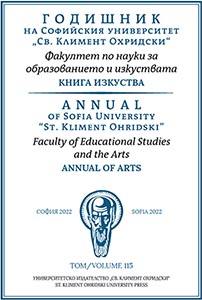HOMO ARBITER FORMAE
HOMO ARBITER FORMAE
A Player in the Systems Oriented Culture
Author(s): Venelin ShurelovSubject(s): Fine Arts / Performing Arts, Visual Arts, History of Art
Published by: Софийски университет »Св. Климент Охридски«
Keywords: digital art; system aesthetics; art and technology; performative media; Jack Burnham
Summary/Abstract: Homo Arbiter Formae is a major player in the post-formalist functioning of systems-oriented culture. Homo Arbiter Formae or the One-Makes-Aesthetic-Decisions is the next evolutionary step of human. The theory considers making art as building systems. The visionary definition was given by Jack Burnham in 1968, in his essay “Systems Aesthetics”. The definition marks the transition from object oriented to systems oriented culture. In thetext, I place special emphasis on different types of performativity available in a wide range of artistic practices, including visual arts, literature, music, dance, theatre. Performativity, which is determined by the idea that the work of art is a reactive consequence of the functioning of certain factors and circumstances, i.e. effect of the processes in a system.
- Issue Year: 115/2022
- Issue No: 3
- Page Range: 99-116
- Page Count: 18
- Language: Bulgarian

